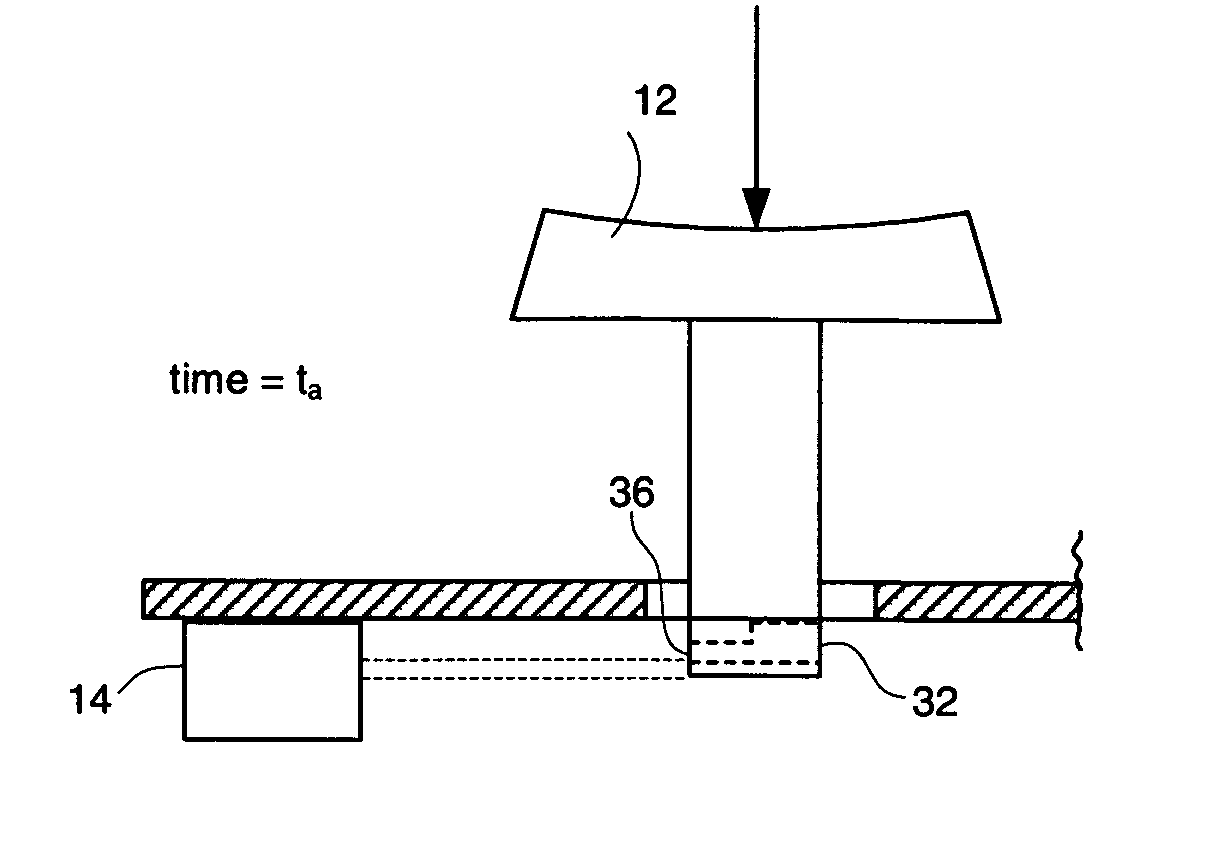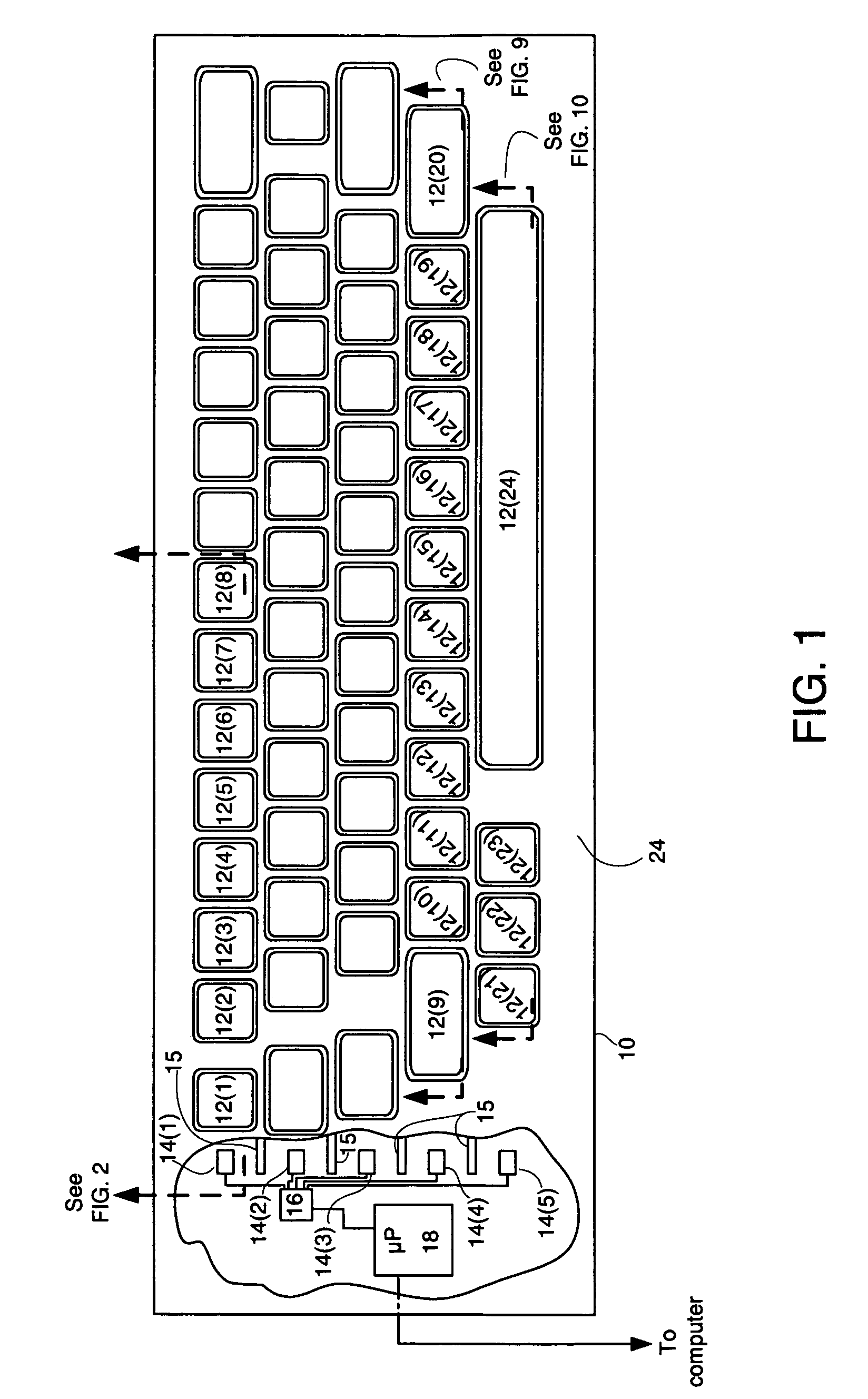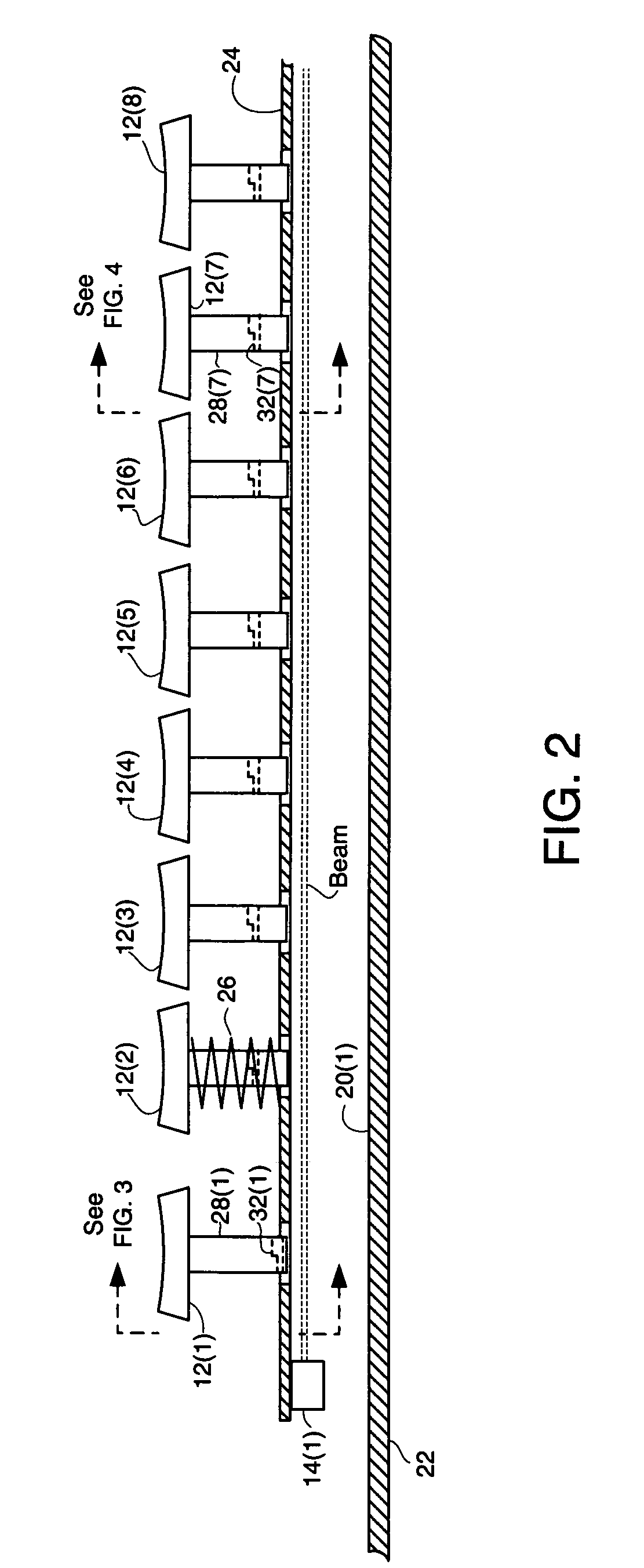Keyboard or other input device using ranging for detection of control piece movement
a control piece and range detection technology, applied in the field of keyboards and other computer input devices, can solve the problems of not being able to operate in strong ambient lighting conditions, not being able to completely substitute mechanical keyboards, and conventional keyboard technology limiting the degree to which keyboard manufacturing costs can be reduced
- Summary
- Abstract
- Description
- Claims
- Application Information
AI Technical Summary
Benefits of technology
Problems solved by technology
Method used
Image
Examples
Embodiment Construction
[0031]FIG. 1 is a diagram of a keyboard 10 according to at least some embodiments of the invention. Although keyboard 10 is shown with a collection of keys arrayed in a manner similar to that of a common office keyboard, the invention is not limited by the type, number or arrangement of keys or other user controls. For ease of reference, but so as to avoid unnecessary detail, a portion of the keys shown in FIG. 1 are numbered 12(1)-12(24). The keys of keyboard 10 are attached to portions (not shown in FIG. 1 but shown in FIG. 2) extending through an upper case 24. Shown in a partial cutaway at the side of keyboard 10 are five laser range detection sensors 14(1)-14(5) positioned at the far end of each row of keys. Separating each key row is a baffle 15. Baffle 15 prevents light reflected from a key in one row from reaching a sensor corresponding to another row. Each of sensors 14(1)-14(5) includes a laser diode and associated range sensing module.
[0032]Each of sensors 14(1)-14(5) is ...
PUM
 Login to View More
Login to View More Abstract
Description
Claims
Application Information
 Login to View More
Login to View More - R&D
- Intellectual Property
- Life Sciences
- Materials
- Tech Scout
- Unparalleled Data Quality
- Higher Quality Content
- 60% Fewer Hallucinations
Browse by: Latest US Patents, China's latest patents, Technical Efficacy Thesaurus, Application Domain, Technology Topic, Popular Technical Reports.
© 2025 PatSnap. All rights reserved.Legal|Privacy policy|Modern Slavery Act Transparency Statement|Sitemap|About US| Contact US: help@patsnap.com



